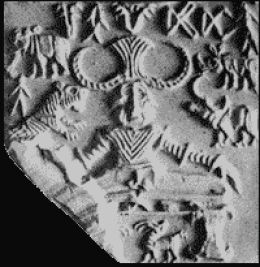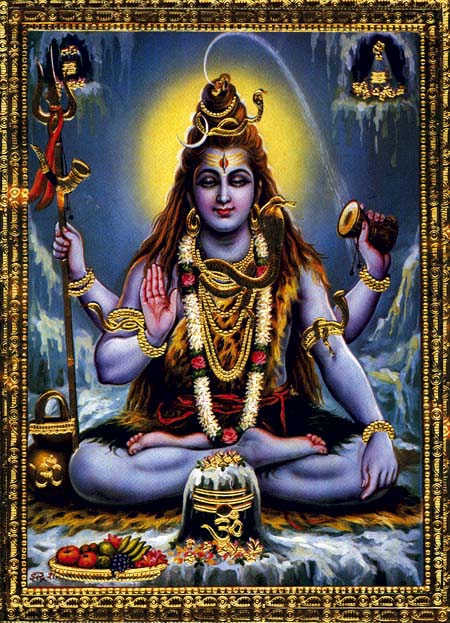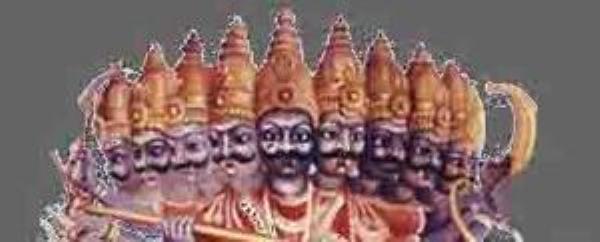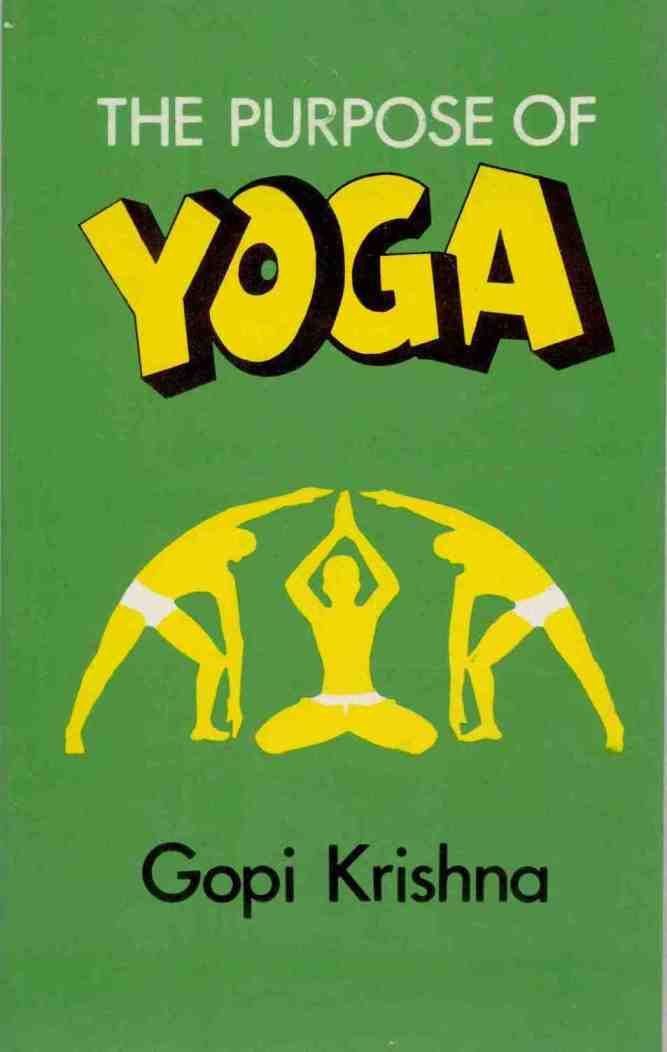Kundalini in India
The earliest evidence for this knowledge dates back to the Indus Valley, early Egyptian, and Sumerian civilizations, before 3,000 BCE. Seals from the highly advanced Indus Valley civilization have been found that depict a male figure, (likely a deity), sitting cross-legged in Yoga posture with an erect phallus. This clearly symbolizes the reversal of the reproductive system for spiritual purposes, known in Sanskrit as urdhava-retas, or upward flow of the reproductive energy.

Indus Valley seal
The oldest known spiritual texts are the four Vedas of India, dating from about 1,500 to 500 BCE. Numerous hymns in the Rig-Veda praise soma (the nectar of the Gods) as the bestower of immortality, wisdom and the knowledge of Brahman (i.e. higher consciousness). But what is soma.
Some modern scholars have postulated that soma was the intoxicating juice of the sauma (haoma) plant. But this theory is clearly refuted in Rig-Veda (X - 85.3), which says, “One thinks one drinks soma because a plant is crushed. The soma that the Brahmans know -- that no one drinks.”
Shiva and Kundalini
One meaning of the word soma, which gives us a clearer indication of its true identity, is the Moon. The symbol of the lustrous crescent Moon is always depicted on the forehead of Lord Shiva. This represents the exquisitely blissful radiance flooding the brain when Kundalini is aroused and sends the powerful stream of prana up the spine.

Lord Shiva with Moon and Serpent
The ancient lingam-yoni symbol is very common in Hinduism even today. It represents the union of the female and male principles (Shakti and Shiva, or energy and consciousness), resulting in enlightenment.

Lingam-Yoni Symbol
Kundalini has also been known as the Serpent Power. Mythologically, the serpent represents a being of great power and wisdom. Lord Shiva is almost always depicted with a serpent around his neck.
Another very well known image is Lord Vishnu reclining on the coils of a huge nine-headed serpent, with his spouse Lakshmi, floating on an ocean of milk.

Vishnu, Lakshmi and Serpent on the Ocean of Milk
The serpent is named Ananta (endless or infinite), and supports Vishnu in the same way that prana-Shakti maintains the life of every living organism. The ocean of nourishing milk represents ojas (bio-plasma) present in every cell of the body which, when collected and sent to the brain by the nervous system, transforms our consciousness.
The most overt system designed to awaken Kundalini is the Tantras. They specify various practices involving sexual arousal and the development of the ability to convert the sexual essences and send them to the brain, rather than expressing them outwardly.
The entire history of India is permeated with overt, symbolic and allegorical references to the awakening of Kundalini. One of the most famous of these symbols is the Nataraj or ‘Dancing Shiva’, a statue depicting many of the major characteristics of one who has attained the state of cosmic consciousness.
Nataraj (Dancing Shiva)
The upper left hand holds a flame and the upper right a drum, symbolizing the blissful light and sound experienced by one in the enlightened state. The lower right hand forms the gesture dispelling fear, indicating that in this state one has no fear of death. The figure being crushed under foot is the ego, called ‘the man of forgetfulness and misunderstanding’ who does not realize his divine nature.
An allegorical example of the awakening of Kundalini is the epic Ramayana story of about 24,000 Sanskrit verses, attributed to the sage Valmiki. The three main characters in the story are the noble Rama, his beautiful wife Sita, and an evil demon named Ravana, who kidnaps Sita and imprisons her in his island fortress of Lanka.
Sita, the epitome of feminine virtue (i.e. the ideal wife), represents the creative female principle, i.e. Kundalini. Lanka signifies the physical body, in which Kundalini is ‘imprisoned’.
Ravana has ten heads, representing the five organs of sense and five organs of action, which lead to desire, and prevent us from realizing our true divine nature. Rama, the male principle (i.e. consciousness), is the epitome of virtue, and by his courage, strength, faith, perseverance, high morals and ideals, eventually defeats Ravana and ‘releases’ Sita from prison (frees the individual consciousness to unite with the universal consciousness in enlightenment).

Ravana
Related ICR Resource:
The Purpose of Yoga
What enabled the Egyptians to design and construct the Great Pyramid? How did the ancient Maya develop a calendar more accurate than our own? Gopi Krishna asserts that a new activity of the cerebro-spinal system and the opening of a super-sensory channel in the brain provides the answers to these riddles.





